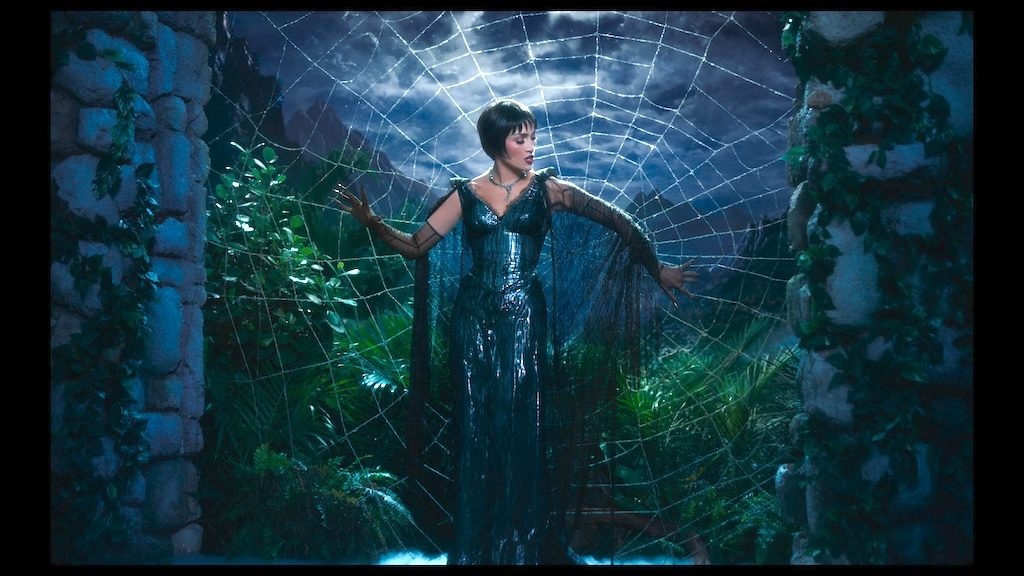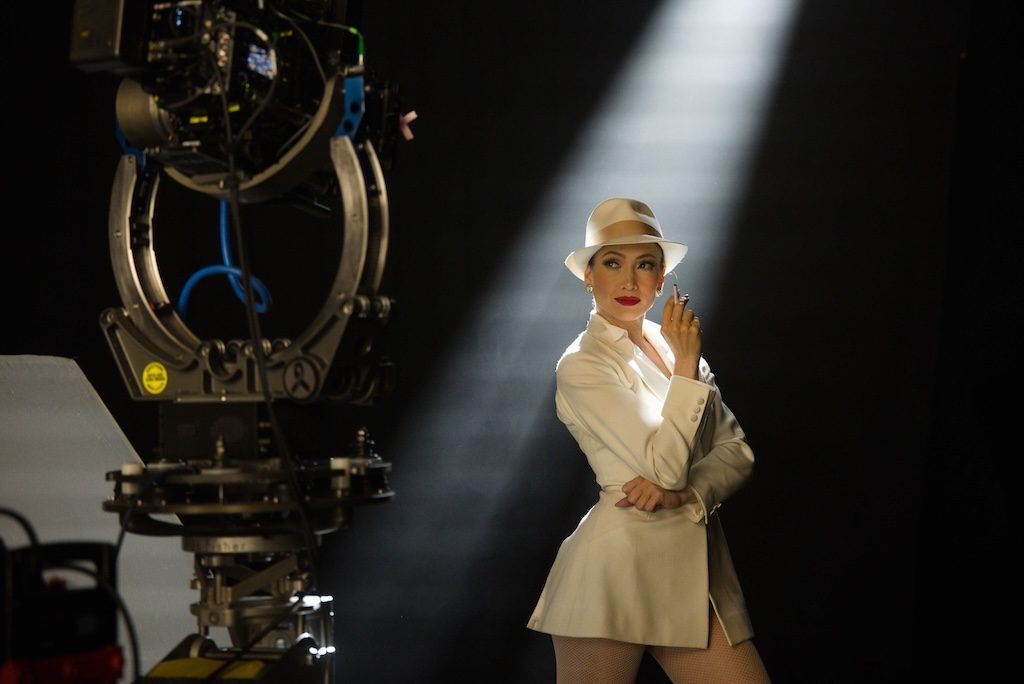Behind The Web: Bill Condon on Revisiting “Kiss of the Spider Woman”

Few stories loom as large in the canon of page, stage and screen as Kiss of the Spider Woman. Adapted from Argentinian writer Manuel Puig’s 1976 novel, there is a 1983 stage play version, a 1985 film, directed by Héctor Babenco, and the unforgetable 1993 Broadway musical. They each broke barriers with their depiction of sexuality, political resistance, love, isolation, and the unlikely friendship between two ideologically different cell mates.
Now, acclaimed writer/ director Bill Condon (Gods and Monsters, Chicago, Dreamgirls) brings his unique perspective to a new adaptation, weaving fresh emotional threads into the intricate web of Puig’s classic novel. In the 2025 film, Tonatiuh (as Luis Molina) and Diego Luna (as Valentin Arregui) step into the iconic roles first immortalized by William Hurt and Raul Julia.
Bill Condon’s visionary new cinema adaptation is based on the acclaimed novel Kiss of the Spider Woman and the Tony Award®-winning Broadway musical of the same name by the multiple Tony Award®-winning playwright Terrence McNally (Master Class, Ragtime) and composer/ lyricist team John Kander and Fred Ebb (Cabaret, Chicago).
In this interview with Creative Screenwriting Magazine, Condon discusses the challenges of honoring a beloved text, the art of adaptation, and why the story and its message of sacrifice and love remains especially relevant today.
Revisiting a Timeless Cell: The Allure of Adaptation
For Condon, returning to Kiss of the Spider Woman was not a decision made lightly. “It’s one of those stories that never really leaves you,” he reflects. He tinkered with the story for decades. “The interplay between fantasy and harsh reality, the way Puig uses narrative to both shield and expose his characters — it’s incredibly rich material for screenwriting,” he states.
That richness, Condon notes, is also a challenge: “There’s a legacy to reckon with. The novel is beloved, and Leonard Schrader’s Oscar-nominated screenplay for the 1985 film set a high bar. I was drawn to the challenge of making it new without betraying what made it matter in the first place. Puig’s voice is so singular — funny, tragic, but always humane. My job was to respect that, even as I found new shades in the characters.”

Bill Condon
The pressure is heightened, Condon says, by the story’s devoted following. “You always feel a sense of responsibility to the fans, to the history, but also to the world we’re in now. I wanted to honor the original, but also push into areas that might resonate differently today,” he continues.
Who Is The Spider Woman?
The Spider Woman is a magical creature who represents death, but also death as a choice. “I just want to quote something at the end when Valentin said, ‘She died for a cause,’ and Molina says, ‘No, I died,'” Condon quips. Molina died for love.
“She represents death as something you welcome when there’s a greater good, or a greater benefit to be had.” The Spider Woman also represents sacrifice and protection to the villagers from the wild beasts. But in return she wanted to experience love – something she could never have. So, the village women would sacrifice one of their loved ones to renew their contract with her every ten years.
These themes of love and sacrifice are echoed throughout the entire film.

Jennifer Lopez. Photo courtesy of Roadside Attractions
Caught Between Fantasy and Oppression: Characters in Conflict
Central to the story are Molina — the flamboyant window dresser imprisoned for indecency, and Valentin — the hardened Marxist political prisoner. “It’s a classic odd-couple set-up, but with real stakes,” Condon explains. “Molina uses the language of old movies— glamour, romance, escape — to survive. Valentin clings to ideology and purpose. What happens between them is a slow, painful opening up.”
Condon is especially interested in how storytelling becomes a survival tactic. “Molina’s nightly retellings of B-movies aren’t just entertaining diversions — they’re lifelines. They’re both a shield and a confession. That’s the thing about storytelling: it can be armor, but also a bridge. Molina’s stories force Valentin to see the world through a different lens, and vice versa.”
Their relationship is fraught with tension, but also laced with moments of humor, tenderness, and grace. “Those moments when the cell disappears and you’re swept into Molina’s vivid imagination — that’s where you see the power of narrative to liberate, even if only for a few minutes,” Condon speaks of the technicolor musical interludes.
The real journey for the two men is that they initially brand each other by their external markers until they gradually see each other for who they are.
Finding the Script’s Spine: Structure, Subtext, and Emotional Arcs
As anyone who’s adapted a literary classic knows, the process is about choices. “The novel is elliptical, layered with footnotes, inner monologue, and fantasy,” Condon shares. “Film demands clarity and flow. I approached the script as a series of reveals — first about the characters’ facades, then about their secret wounds.”
Condon’s adaptation leans into the interplay between reality and fantasy. “I had to decide: What’s the core relationship? How much do we stay in the cell, how much do we step into Molina’s fantasy world? There’s a risk of the movie-within-the-movie taking over, but it’s essential. Each time Molina tells a story, he’s really telling us something about himself, or about Valentin, or about the world outside.”
To keep both the cell and the fantasy alive, Condon focused on sweeping transitions. “I wanted the fantasy sequences to be lush and seductive, but also a little bit haunted. They’re never just escapes — they’re reminders of what’s at stake, of what’s being lost. Structurally, it’s a dance between confinement and release.”

Jennifer Lopez. Photo courtesy of Roadside Attractions
The Power and Peril of Representation
With today’s polarized cultural climate, Condon is acutely aware of the challenge of revisiting a queer classic. “The film was revolutionary in ’85. Now, the conversation about representation and authenticity has evolved. Molina is a character written and played in another era — how do you keep him honest, complex, and avoid cliché?”
Condon emphasizes collaboration. “It’s about listening. I worked closely with consultants and actors from the LGBTQ+ community, making sure Molina was never reduced to stereotype. At the same time, his vulnerability, his wit, his contradictions — those are universal.” Molina needed space to be more than a symbol or caricature.
Valentin too, is a character who must be handled with care. “He’s not there to be converted or softened — he’s there to be challenged. Their relationship is a negotiation, not a surrender,” Condon notes.
Writing Under Constraint: The Art of the Two-Hander
Much of Kiss of the Spider Woman unfolds in the claustrophobic intimacy of a prison cell. For Condon, this was both a gift and a challenge. “Two characters, one room — it’s a screenwriter’s dream and nightmare. You have nowhere to hide. Every turn, every beat, has to feel earned.”
Molina expounds the virtues of self-worth in a place that despises him. He’s practical. On the other hand, Valentin srtictly adheres to his revolutionary principles and lives in the world of academia and possibilities. He’s intellectual and analytical. Molina is a dreamer and embraces his fantastical escapades.
Condon drew inspiration from stage plays. “It’s about rhythm — when to let the tension simmer, when to explode. Dialogue becomes everything. You have to trust that the audience will lean in, that the silences will say as much as the words. The cell becomes a crucible for truth and fantasy alike.”
Legacy and New Relevance
Nearly forty years after its first adaptation, why does Kiss of the Spider Woman still resonate with audiences? Condon is unequivocal. “It’s about the lines we draw — between fantasy and reality, between one another. It’s about finding common humanity in the most dehumanizing circumstances. In a world obsessed with division, this story insists on connection.”
“And at the end of the day, it’s about the power of a good story. That’s something every screenwriter understands,” Condon concludes.
Join the Discussion!
Related Articles
Browse our Videos for Sale
[woocommerce_products_carousel_all_in_one template="compact.css" all_items="88" show_only="id" products="" ordering="random" categories="115" tags="" show_title="false" show_description="false" allow_shortcodes="false" show_price="false" show_category="false" show_tags="false" show_add_to_cart_button="false" show_more_button="false" show_more_items_button="false" show_featured_image="true" image_source="thumbnail" image_height="100" image_width="100" items_to_show_mobiles="3" items_to_show_tablets="6" items_to_show="6" slide_by="1" margin="0" loop="true" stop_on_hover="true" auto_play="true" auto_play_timeout="1200" auto_play_speed="1600" nav="false" nav_speed="800" dots="false" dots_speed="800" lazy_load="false" mouse_drag="true" mouse_wheel="true" touch_drag="true" easing="linear" auto_height="true"]










You must be logged in to post a comment Login